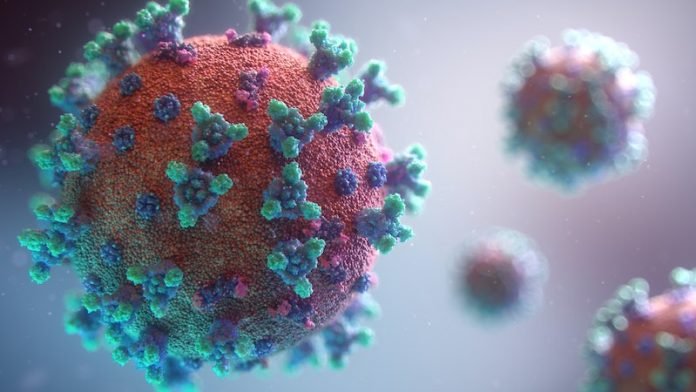
In a new study from the University of Gothenburg, researchers found one way in which the body combats COVID-19 is by mutating the coronavirus, making it less harmful.
This built-in protective mechanism in cells has a clear connection with decreased viral load in the body
Mutations are often associated with the emergence of virus variants that are more contagious and pathogenic than their predecessors.
However, the current study shows that virus mutations often work in the opposite direction.
In the study, the team mapped mutation patterns in the SARS-CoV-2 coronavirus.
The results showed that the body’s natural enzyme ADAR1 (adenosine deaminases acting on RNA) impairs the reproduction of SARS-CoV-2.
The study shows that there is an inverse link between the viral load (the measurable amount of virus in the body) and the extent to which ADAR1 has mutated the virus.
The team also found that ADAR1-induced mutations are the most common type of SARS-CoV-2 mutation.
In particular, the scientists noted that individual patients are often infected with more than one variant of the virus.
When mutations in relatively rare virus variants were investigated, it was found that a common mutation in which one nucleotide, guanosine (G), replaces adenosine (A) strongly worsened the reproductive ability of SARS-CoV-2.
These mutations are caused by the enzyme ADAR1.
Analyses of more than 200,000 virus strains from patients who were ill with COVID-19 showed that mutations caused by ADAR1 were mainly circulating in summer 2020, when transmission and mortality rates were low in Europe.
When transmission and mortality rates were higher, virus variants with ADAR1-induced mutations were uncommon, probably because they were outcompeted by more infectious virus strains.
The current results clarify how the body’s cells can generate mutated virus variants.
Mutations can make a virus more infectious, but in most cases the mutations the team studied make the virus weaker; instead of spreading, it’s removed from infected cells.
These findings suggest that ADAR1 serves as a protective mechanism used by the body to limit viral infections.
If you care about Covid, please read studies that people with COVID-19 infections may age much faster, and what you need to know about omicron variant.
For more information about Covid, please see recent studies about antibodies that can neutralize Omicron, and results showing that even symptom-free, people with Omicron are much more likely to spread COVID.
The study is published in PNAS and was conducted by Johan Ringlander et al.
Copyright © 2022 Knowridge Science Report. All rights reserved.




